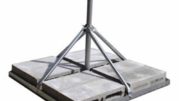Folks know that I have a lot of respect for Tyler, “The Antenna Man.” I’ve called him out when I thought he was wrong, but he’s hardly ever wrong. So I was pretty curious when he broke the story of one low-power TV station that was actually doing 4K broadcasts without using the ATSC 3.0 standard. Here’s the video Tyler produced:
I was very interested in this and I set out to figure out how this could be true, knowing what I know about broadcasting law.
One basic fact about broadcast law
Here’s something that I thought was inviolable fact: Any TV broadcasts, in fact any broadcasts in the radio and TV bands, must be able to be decoded by every TV and radio sold today. While that’s essentially still true, there are three things that I didn’t take into account.
Issue 1: “All TVs and radios sold today.”
When the ATSC 1.0 standard was first rolled out, it only included support for MPEG-2 encoding. This is the encoding scheme used by DVDs. By today’s standards, it’s obsolete. As far as I can tell, most — if not all — TVs actually sold today support both MPEG-2 and MPEG-4. MPEG-4 is a more modern version of the MPEG encoding standard. It was used for Blu-ray discs and a descendent of it is still used today for streaming. Because pretty much all TVs either have streaming ability or are built on the same motherboard as a TV with streaming ability, MPEG-4 compatibility comes along for the ride.
Issue 2: Exceptions for secondary broadcasts
I’ve come to understand that the rule specifically applies to the primary broadcast on a frequency. In the case of TV, this is the main channel, the one that has .1 at the end of it when you’re watching from an antenna. Generally speaking this is a major network affiliate like ABC, NBC, etc. However, nearly every TV station has subchannels to give additional content. They’re labeled as .2, .3, etc.
Apparently these subchannels aren’t required to be received by everyone the same way that the primary channels are. So, this allowed stations like New York’s WPIX to move their subchannels to MPEG-4. Most people would still be able to get these broadcasts because their TVs were new enough. But legally, WPIX could use this format because they were still broadcasting in MPEG-2 for their primary station.
The same carveout is used to let FM stations carry HD Radio on the edges of their frequency range. Not every radio can receive HD Radio, but every radio can receive the primary FM station. There’s another thing which works in HD Radio’s favor, and it’s the reason that the person in Tyler’s video is able to broadcast 4K.
Issue 3: Different rules for low power stations
It seems that the rules might be different for low power stations than they are for full-on broadcast stations. Low power stations often are used as repeaters for other signals. In other words the broadcaster is putting out an MPEG-2, perfectly usable, version of their signal. It just might not reach certain areas which they’re not legally required to reach. A repeater is used to reach those areas, generally to help the station with ad revenue. They can’t sell ads in a city they can’t reach.
I’m still not completely sure of the legality of the station in Tyler’s video broadcasting a signal that most people can’t receive and decode, but I’m sure it helps that this is a low power station and not a full-power broadcast station.
Tyler’s also right about one thing
One big reason that no one is broadcasting in 4K is that there isn’t any 4K content out there. The ATSC 3.0 test broadcasts are required to be exactly the same content as the ATSC 1.0 channels they mirror, meaning they are HD. But it’s possible that if there actually was 4K broadcast content, that the ATSC 3.0 channels might be able to broadcast it. There isn’t, and no one knows when there will be any. That’s one of the things that’s held up 4K adoption for well over a decade now. I’m pretty confident that at least some programming is probably being produced in 4K right now. After all, some shows started producing content in HD around 1999. So it’s probably being done, it’s just not provided to the networks.
The end of my knowledge on the subject
I’ve done the research I can do and I’ve exhausted my knowledge of the subject. From what I can figure out, if a broadcaster wanted to do a 4K subchannel, they could. If they wanted their primary channel to be 4K in ATSC 1.0, without a separate mirror channel broadcasting a traditional HD signal, they couldn’t. At least that’s what I’m getting. I hope that if there’s someone with more legal knowledge than I have, who can weigh in here.
Anyone care to take it from here?
I’d sure appreciate it. I know when I’m at my limit.





